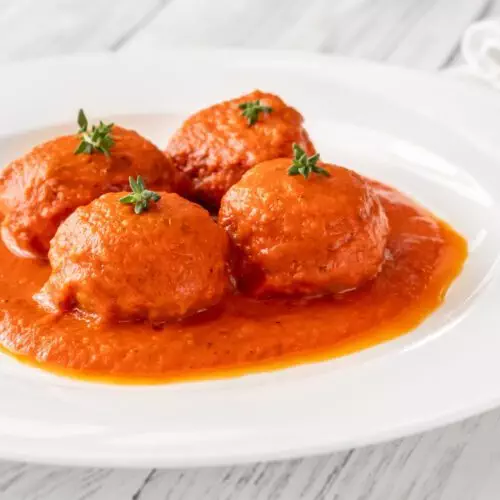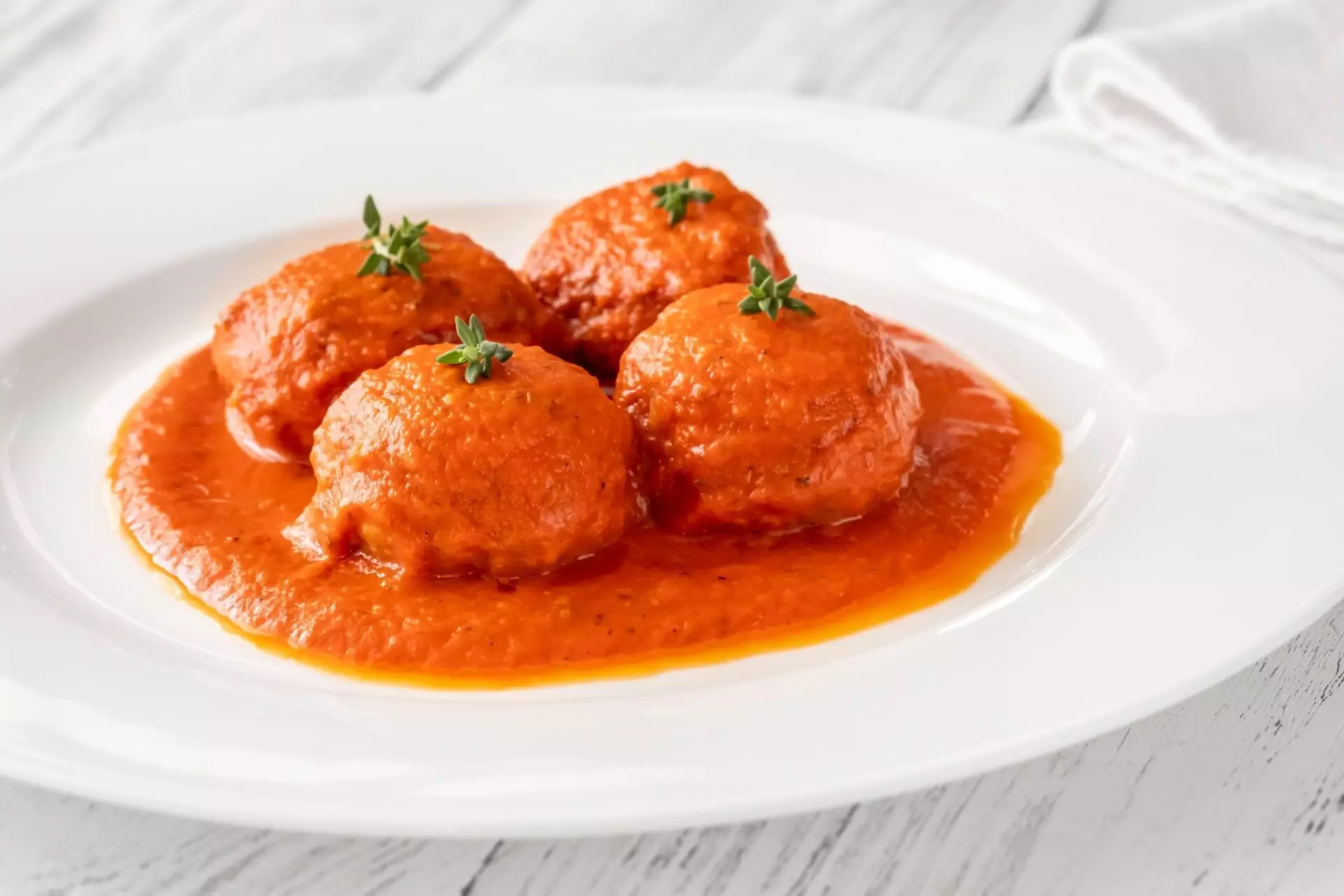Few dishes capture the heart of Spanish home cooking like meatballs or Spanish albóndigas. Whether served as a comforting main dish or a tapa with crusty bread, these flavorful morsels are long-standing in Spanish culinary tradition. Made with a blend of tender meats, aromatic herbs, and spices, albóndigas are often simmered in a rich tomato sauce or a savory almond-based broth, depending on the region.
This recipe isn’t just about delicious meatballs; it’s a celebration of Spanish flavors and the simple, wholesome ingredients that bring families together around the table. In this article, we’ll walk you through the steps to create authentic albóndigas, sharing tips to achieve the perfect texture and bold flavor every time. Whether you’re new to Spanish cooking or looking to perfect your technique, this is the recipe you’ll want to keep on hand.
Table of Contents
The History of Spanish Albondigas: A Fusion of Flavors
Spanish albondigas have a deep-rooted history, with Arabic and Mediterranean cuisine influences. Traditionally, they were made using a mixture of ground beef and pork, seasoned with garlic, paprika, parsley, and other aromatic herbs and spices. The meatballs were then simmered in a luscious tomato sauce, infusing them with robust flavors.
Classic Albondigas Recipe: A Traditional Culinary Treasure
Try our authentic Spanish meatball recipe for a true taste of tradition. Combine ground beef and pork with breadcrumbs, eggs, garlic, paprika, parsley, salt, and pepper. Shape the mixture into small meatballs and lightly brown them in a skillet. Prepare a rich tomato sauce with onions, garlic, tomato purée, and spices. Add the meatballs to the sauce and simmer gently until cooked through. Serve with your choice of accompaniments, such as rice or potatoes.
Delicious Variations of Spanish Albondigas to Satisfy Your Palate
While the classic recipe remains a favorite, Spanish albondigas offer endless variations. Some regional adaptations incorporate chorizo or grated cheese into the meat mixture. Others experiment with different meats or spices, creating unique flavor profiles. Vegetarian versions also exist, using plant-based proteins such as lentils or mushrooms.
Elevate Your Culinary Skills: Secrets to Perfect Spanish Albondigas
Here are 7 secrets to making perfect Spanish albóndigas:
1. Use a Meat Blend
The classic combination of ground pork and beef provides the ideal balance of flavor and juiciness. Pork adds richness, while beef gives structure.
2. Don’t Overwork the Meat
When mixing the ingredients, handle the meat gently. Overworking it can lead to tough meatballs instead of tender ones.
3. Add Breadcrumbs Soaked in Milk
Soaking breadcrumbs in milk keeps the meatballs moist and tender. This small step makes a big difference in texture.
4. Season Generously
Spanish flavors shine through with garlic, parsley, smoked paprika, and sometimes nutmeg. Don’t be shy with the seasoning!
5. Brown the Meatballs First
Searing the meatballs in a hot pan locks in the juices and adds a layer of caramelized flavor before simmering them in the sauce.
6. Choose the Right Sauce
Tomato-based sauces are the most common, but almond or saffron broths are excellent for a regional twist. The sauce should complement, not overpower, the meatballs.
7. Let Them Simmer
Allow the albóndigas to simmer gently in the sauce. This not only infuses the sauce with flavor but ensures the meatballs are tender and perfectly cooked.
By following these tips, you’ll take your albóndigas from good to unforgettable!
Related Spanish Recipes
If you love albóndigas, here are other Spanish dishes to try:
- Patatas Bravas: Spicy potatoes served with a tangy sauce.
- Tortilla Española: A classic Spanish potato omelet.
- Pollo al Ajillo: Garlic chicken bursting with flavor.
- Gazpacho: A refreshing cold tomato soup.
FAQs About Albóndigas
1. What meat is traditionally used for albóndigas?
A mix of ground beef and pork is most common, but some regions also use lamb.
2. Can I make albóndigas ahead of time?
Absolutely! You can prepare the meatballs and sauce and reheat them before serving.
3. Are albóndigas gluten-free?
Traditional recipes often use breadcrumbs, but you can substitute gluten-free breadcrumbs or almond flour.
Conclusion
Spanish albóndigas are more than just a meal; they’re a flavorful tradition that brings the essence of Spain to your kitchen. By following this recipe and our expert tips, you’ll create a dish that’s sure to impress. Pair them with crusty bread and a glass of Spanish wine, and you’ve got yourself a truly authentic experience. Happy cooking!

Authentic Spanish Albondigas: A Savory Delight with a Rich History
Ingredients
- 1 pound Ground beef
- ½ cup Breadcrumbs
- ¼ cup Milk
- 1 Egg
- ¼ cup Fresh parsley
- 2 cloves Garlic minced
- ½ tsp Ground cumin
- ½ tsp Smoked paprika
- ½ tsp Salt
- ¼ tsp Black pepper
- 2 tbsp Olive oil
- 1 Onion chopped
- 2 Carrots chopped
- 2 Stalks celery chopped
- 3 cloves Garlic minced
- 1 Bay leaf
- 4 cups Beef or chicken broth
- 1 Can diced tomatoes 14-ounce
- ¼ cup Chopped fresh parsley for garnish
Instructions
- In a large bowl, mix together the ground beef, breadcrumbs, milk, egg, parsley, garlic, cumin, smoked paprika, salt, and black pepper. Mix well until fully combined.
- Form the mixture into 1 1/2-inch balls and set aside.
- In a large pot or Dutch oven, heat the olive oil over medium heat. Add the onion, carrots, and celery and cook until the vegetables are softened, about 5 minutes.
- Add the minced garlic and cook for an additional minute
- Add the bay leaf, beef or chicken broth, and diced tomatoes to the pot. Stir to combine.
- Bring the mixture to a boil, then reduce the heat to low.
- Carefully add the meatballs to the pot, making sure they are fully submerged in the broth.
- Cover the pot and let the meatballs simmer for 30-35 minutes, until they are cooked through.
- Remove the pot from heat and discard the bay leaf.
- Garnish the albondigas with chopped fresh parsley and serve hot.






